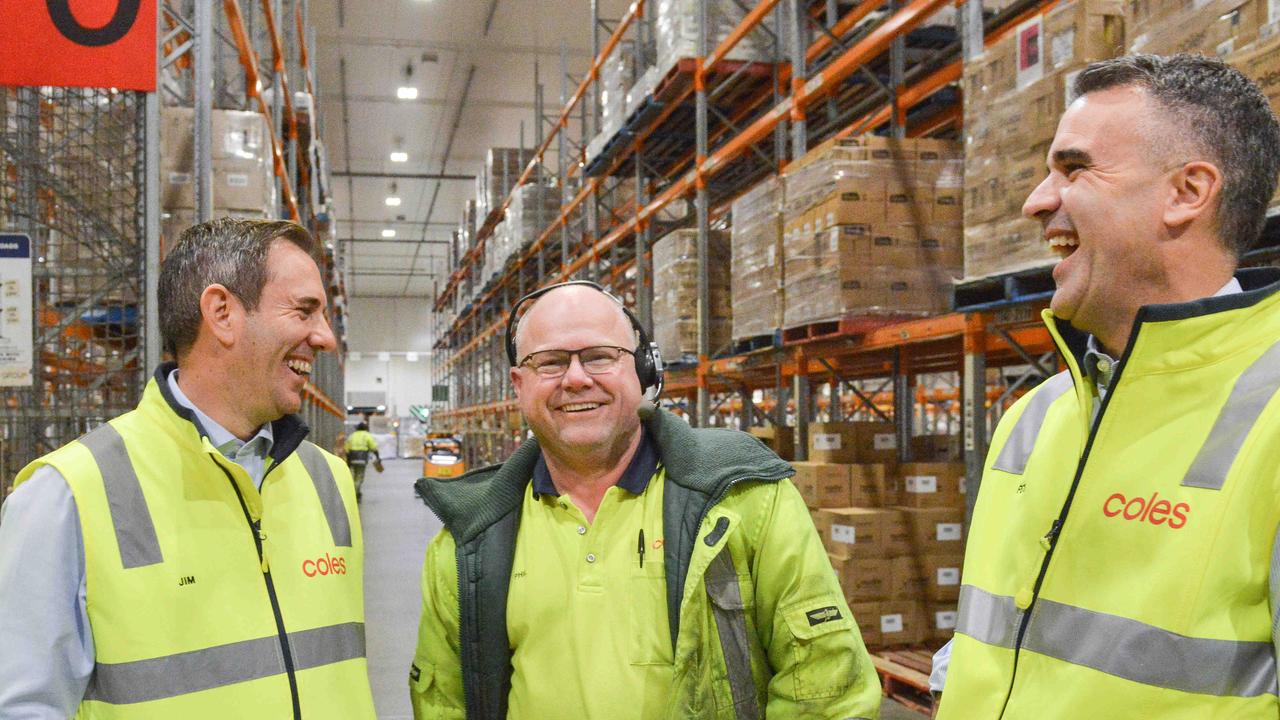ABS data showing positive wages growth but inflation still biting
The Australian Bureau of Statistics has delivered some startling figures concerning wage growth over the last 12 months.
At Work
Don't miss out on the headlines from At Work. Followed categories will be added to My News.
Inflation is still biting hard into the pay packets of Australian workers, despite an increase in wages growth.
According to the Australian Bureau of Statistics’ latest Wage Price Index report released on Wednesday, wages increased 3.7 per cent over the 12 months to the March quarter.
But inflation, while declining, is at 7 per cent – well above the Reserve Bank’s goal of 2-3 per cent.
The ACTU has welcomed the growth in wages, but says there is still a long way to go.
“Even with inflation starting to fall, the latest wage growth figures are still growing at barely half the rate of inflation,” ACTU secretary Sally McManus said.
“Measured over the past 12 months, workers have faced an average real wage cut of 3.3 per cent.”
At least one economist believes the RBA board will again raise the official interest rate at its June 6 meeting.
“CPI inflation is being increasingly driven by components that are more sensitive to labour costs,” said Sean Langcake, head of macroeconomic forecasting for Oxford Economics Australia.
“We have been expecting the RBA will raise rates at least once more and these data do nothing to change that call.”

Treasurer Jim Chalmers said higher wages are the solution to, not the cause of, high inflation.
“We have an inflation challenge for a whole range of other reasons, not because people have been getting paid too much,” said Dr Chalmers.
“If anything, for the best part of a decade, wages have been too stagnant.
“We want people who work hard to be able to provide for their loved ones and get ahead; that has been absent for too long; we’re starting to turn that around and that’s a good thing, not a bad thing.”

The ABS said wages were up 0.8 per cent compared to the previous quarter.
The most significant industry contributors to wage growth were education and training at 1.5 per cent and professional, scientific and technical services at 0.9 per cent.
“An increase in the size of average hourly wage change in both the private and public sector was the main driver of wage growth over the quarter,” the report reads.
“Public sector wages rose 0.9 per cent over the quarter.
“Annual growth increased from 2.5 per cent in the December quarter 2022, to 3.0 per cent in the March quarter 2023. This is the highest annual growth since the March quarter of 2013.
“While the public sector recorded higher quarterly growth, the much larger size of the private sector meant it was the main driver of Australian wage growth.”
During the March 2023 quarter, 60 per cent of jobs reported a higher wage rise than the year prior – the highest proportion recorded since the figures began being collated in 2003.

Public sector wage agreements coming into effect, and regular March quarter increases, resulted in the highest proportion of public sector jobs to receive a wage rise in more than four years.
The ACT experienced the highest quarterly growth at 1.3 per cent and South Australia and Northern Territory the lowest at 0.6 per cent.
Western Australia and Tasmania had the highest annual increase in wages at 4.1 per cent, while the Northern Territory recorded the lowest at 2.9 per cent.
The release of the wages figures coincides with the Fair Work Commission holding a hearing of its annual wage review.
Originally published as ABS data showing positive wages growth but inflation still biting








